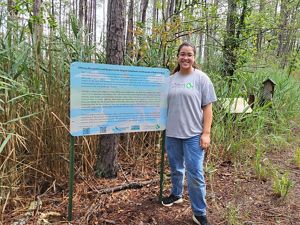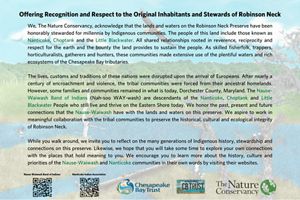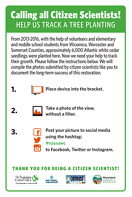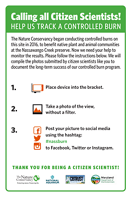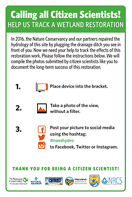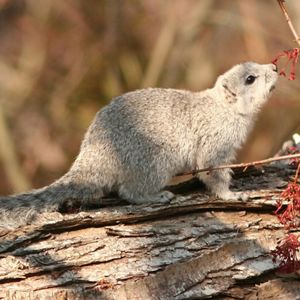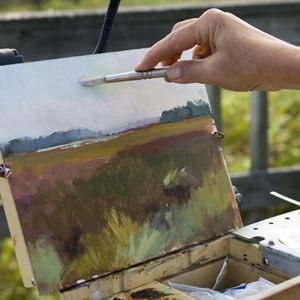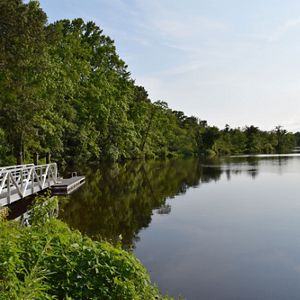Description
Established in 1977 by a generous donation from Frank M. Ewing, Robinson Neck is a birder's delight. The preserve's brackish marshes are of extraordinary ecological value for wintering and nesting waterfowl, spawning fish, sediment control and nutrient production.
Many such brackish bay marshes have been drained or filled for farmland and development. Nearby upland forests provide an important buffer in the protection of these marshes and the entire Chesapeake Bay.
By protecting these habitats, we can help sustain the natural systems that are the lifeblood of the Chesapeake Bay.

